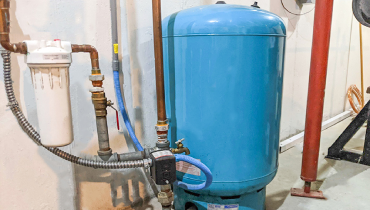Leading Methods for Addressing Low Water Pressure in Your Home
Leading Methods for Addressing Low Water Pressure in Your Home
Blog Article
We have found this post involving 4 Ways to Troubleshoot Low Water Pressure down the page on the internet and accepted it made good sense to talk about it with you on my blog.

Low tide pressure in your house can be an irritating trouble, influencing whatever from showering to washing dishes. If you're experiencing weak water flow, there are numerous possible causes and remedies to discover. In this guide, we'll discuss usual factors for low tide pressure and sensible actions to resolve the concern efficiently.
Intro to Low Water Pressure
Low tide pressure happens when the circulation of water from your taps, showers, and other components is weak than typical. This can make daily jobs extra difficult and much less effective. Understanding the sources of low water stress is essential to locating the best option.
Common Causes of Low Tide Pressure
Faulty Stress Regulatory Authorities
Stress regulatory authorities are accountable for maintaining constant water stress in your house. If they malfunction, it can cause low water stress or irregular flow throughout your home.
Community Water System Issues
In some cases, the issue lies outside your home. Metropolitan water system problems, such as main line leakages or maintenance job, can temporarily lower water pressure in your area.
Pipe Obstructions
Over time, pipelines can come to be obstructed with mineral deposits, sediment, or debris, limiting the flow of water. This is an usual issue in older homes with galvanized steel pipes.
Rust
Deterioration within pipelines can lead to leakages and minimized water pressure. Rust build-up can constrict water flow, particularly in maturing plumbing systems.
How to Identify Low Tide Stress
Inspecting Pipelines
Inspect visible pipes for indicators of leakages, deterioration, or obstructions. Focus on any type of unusual noises, such as banging or rattling pipelines, which might indicate issues within the plumbing system.
Consulting with a Plumber
If you're incapable to pinpoint the root cause of low water pressure, take into consideration hiring a professional plumber to carry out a complete examination. They can determine underlying problems and advise ideal remedies.
Examining Taps and Components
Beginning by examining the water stress at various faucets and fixtures throughout your home. If the issue is separated to certain locations, it may suggest localized troubles.
DIY Solutions to Take Care Of Low Water Stress
Flushing Hot Water Heater
Sediment buildup in the water heater can limit flow and lower efficiency. Flushing the container occasionally assists remove debris and maintain optimum efficiency.
Inspecting Stress Regulator
Guarantee that the pressure regulator is operating properly. Adjusting or replacing the regulator can aid restore appropriate water pressure throughout your home.
Cleaning Up Aerators and Showerheads
Natural resources can accumulate in aerators and showerheads, minimizing water flow. Get rid of and clean up these parts frequently to enhance water stress.
Clearing Up Clogs in Pipes
For minor blockages, try utilizing a plumbing snake or chemical drain cleaner to clear obstructions in pipelines. Beware when making use of chemicals and comply with security standards.
When to Call an Expert Plumber
If do it yourself initiatives stop working to deal with the issue or if you suspect significant plumbing problems, it's finest to look for assistance from a licensed plumber. They have the knowledge and devices to address complex issues safely and efficiently.
Safety Nets to Keep Water Stress
Setting Up a Pressure Booster
Think about installing a pressure booster pump to boost water stress in areas with consistently reduced flow. This can be especially beneficial for multi-story homes or homes with high-demand fixtures.
Tracking Water Usage
Bear in mind water usage behaviors and stay clear of overtaxing the plumbing system. Simple modifications, such as staggering showers and washing lots, can help keep adequate water stress.
Regular Upkeep
Set up routine maintenance for your plumbing system to stop issues such as corrosion, leakages, and obstructions. Addressing minor troubles early can help avoid more considerable repair services later.
Verdict
Dealing with low water pressure can be discouraging, yet recognizing the underlying reasons and carrying out proper options can bring back ideal circulation throughout your home. Whether it's cleaning up aerators, examining pipes, or speaking with a plumber, taking proactive actions can make sure a consistent supply of water for your daily demands.
FOUR WAYS TO FIX LOW WATER PRESSURE NOW
Turning on a shower or faucet only to find the water comes out in a sad, slow drizzle is never a good feeling. How exactly are you supposed to wash a pan or take a quick shower when it takes 10 minutes just to rinse off a little soap? The good news is that when your water pressure is bad, there's always a cause: typically one that can be easily fixed. Here are some of the most common causes of low pressure and what you can do to fix the issue:
DEBRIS AND MINERAL DEPOSIT BUILDUPS
If you notice low water pressure from just one or two of the fixtures in your house, the problem likely has to do with debris buildup. Water is full of minerals and other debris, all of which can accumulate in your pipes and on your fixtures. This can cause a blockage that affects how much water flows through. To fix this, try filling a small plastic bag with white vinegar, and use a rubber band to hang it around your showerhead or faucet. Let the head of the fixture soak for a few hours, and the vinegar should loosen the deposits.
WATER LEAKS
Leaks are another common cause of low water pressure. If water is flowing out of your plumbing through a hole or crack before it can reach your fixture, the pressure coming out of the faucet or showerhead will be lower. A plumbing professional is your best bet for finding and repairing a leak in your water supply pipes.
Leaks are another common cause of low water pressure. If water is flowing out of your plumbing through a hole or crack before it can reach your fixture, the pressure coming out of the faucet or showerhead will be lower. A plumbing professional is your best bet for finding and repairing a leak in your water supply pipes.
A VALVE ISSUE
If you have low water pressure throughout your home, check your main shut-off valve to make sure it's completely open. You may also want to see if there's a pressure-reducing valve installed. If there is, have a plumber help you adjust the settings to get the pressure you're looking for.
OTHERS USING WATER
Believe it or not, your low water pressure could be caused by your neighbors. If you notice low pressure at certain times of day, it may be because you and the people living next to you have similar schedules - when everyone is showering at the same time, the pressure will be lower in every home. Low pressure throughout the neighborhood may also be caused by an issue with your municipal water supply. If that's the case, call the supplier to see if they're working on the issue.
https://www.rotorooter.com/blog/water-leaking/low-water-pressure-fixes/

As an avid person who reads about Low Water Pressure in the House?, I imagined sharing that piece of content was appropriate. Enjoyed reading our piece of writing? Please quickly share it. Help others check it out. I value reading our article about Low Water Pressure in the House?.
Book Report this page